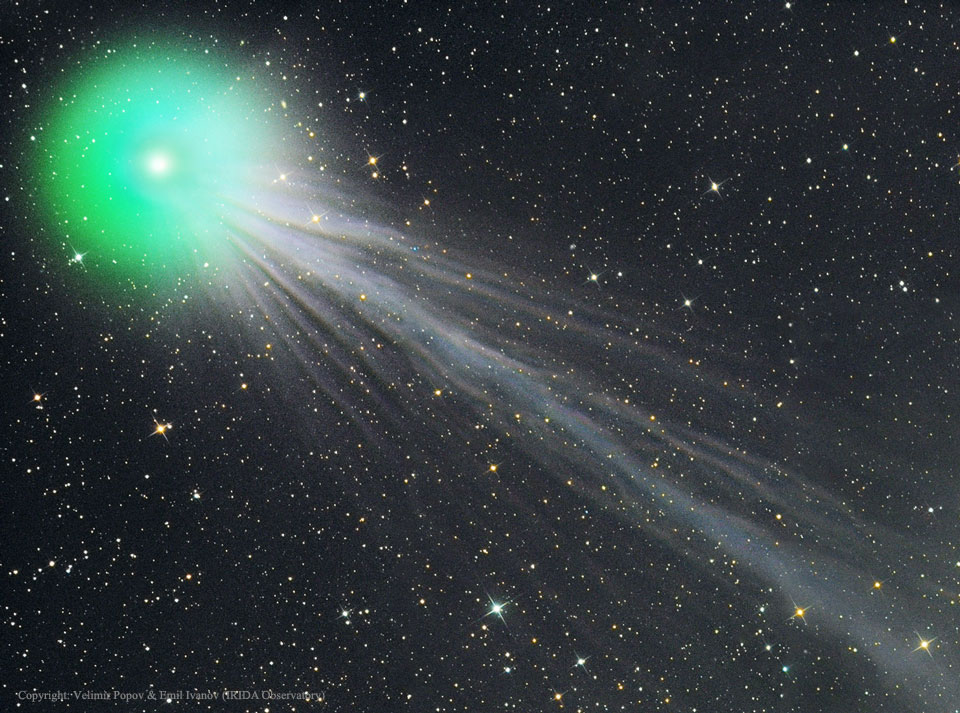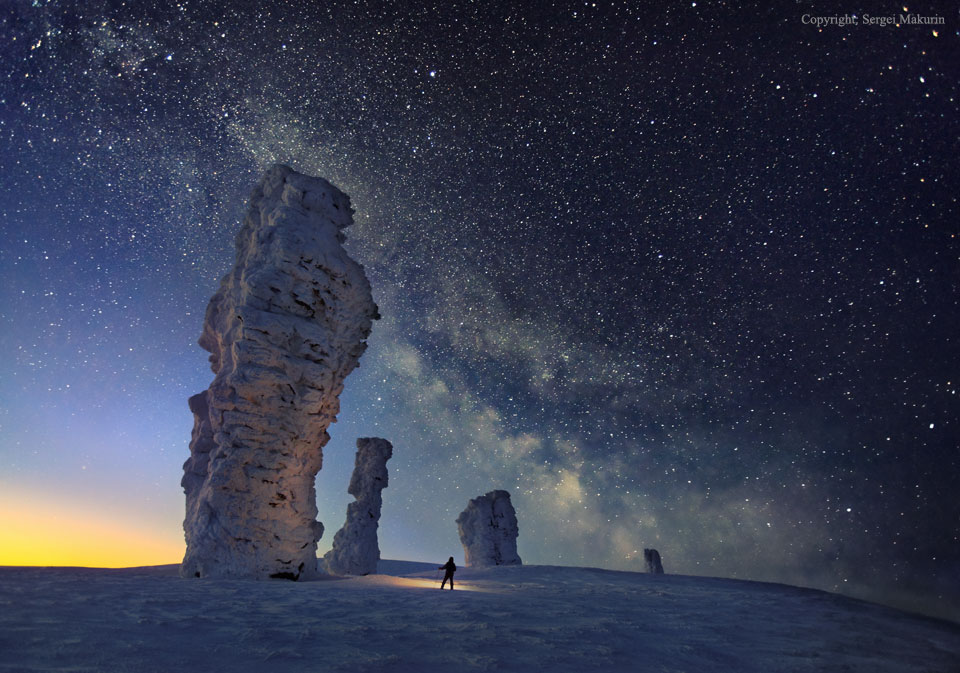Part I: Comet Lovejoy
January 21st, a shot of the complex ion tail of Comet Lovejoy

From recent observations of the now-visible Comet Lovejoy, we now know that the tail is composed of ionized gas (energized by UV light from the Sun). The green tint at the head of the comet and the blue tint in other regions are caused by the recombining of the carbon molecules in the comet.
January 22, Launch to Lovejoy

On January 20th an Atlas V rocket carrying a US satellite heads toward the visible and shining green comet. Among the stars in this image, one can identify the star Sirius, Orion, Taurus, Canis Major, the Pleiades star cluster, and much much more.
January 28th, Comet Lovejoy in the night sky

The image you see above was taken near Paulau village in Spain about two weeks ago. Featured in this image one can find numerous constellations (ex: Orion), bright stars (Rigel, Betelgeuse, the Pleides star cluster), and countless other astronomical objects (the Rosette Nebula, Orion Nebula, M35, Barnard's Loop, etc,). A truly amazing photograph that captures a good chunk of the night sky.
Part II: The Milky Way Galaxy Over Seven Strong Men Rock Formation

No comments:
Post a Comment